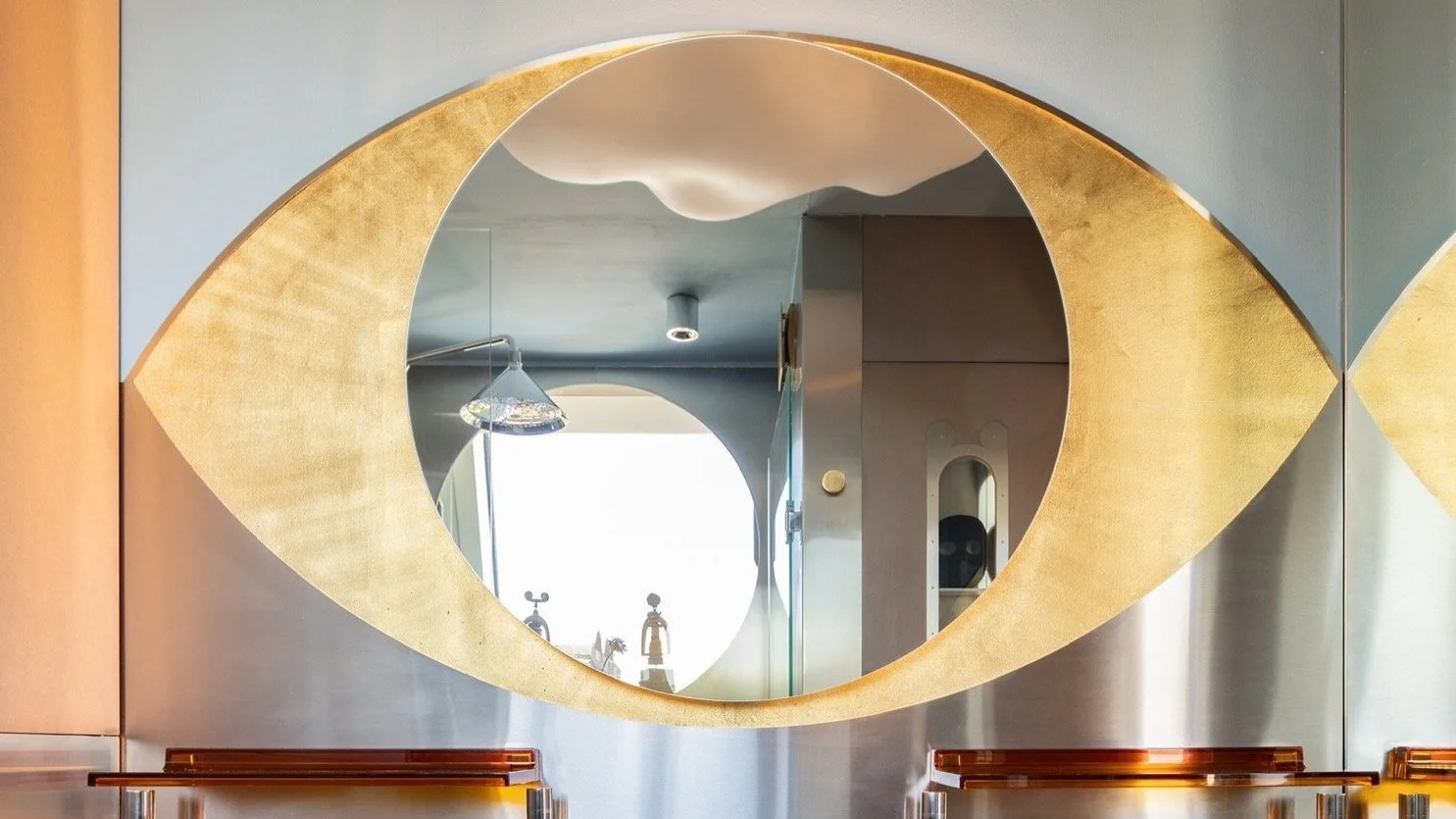
Smoke and Mirrors
Livable art differs from interior design in that the aesthetic experience is prioritized from every possible vantage point. The size and scale of a space significantly affect what can be achieved: a smaller realm must accommodate the essentials of daily life, while a larger habitat can afford zones that serve no purpose beyond the artwork itself. Smoke and Mirrors, located in West London, belongs to the former category—where absolute integration between artwork and functional living space was, and remains, paramount. Every unit in every dimension counts in the pursuit of orchestrating an experiential environment that feels far more expansive than its floorplan suggests.
This project emerged during my time working in extended reality R&D and concept development at a major architectural firm. In parallel, I had recently returned from a study trip across Japan, where I researched temple gardens and large-scale installation art for a VR film. In several of these environments, I felt something profound: certain spaces had a palpable presence—as if the artwork itself was conscious, holding the visitor inside an altered state. This insight shaped my view that the ideal experience of a home is not simply to decorate it, but to live within an artwork—to be held, daily, by an experiential aesthetic. Smoke and Mirrors became an opportunity to test this belief in practice.
The name of the space has dual roots. First, the client partly uses the home as a yoga therapy studio. Second, two defining surface elements are mirrors and wallpaper—the latter depicting etched grey clouds, or smoke, if you will. In classical yoga, the aim is to pierce illusion and arrive at clarity, making Smoke and Mirrors a poetic paradox and a fitting name. Several spaces, features, and moments within the home carry titles of their own, reinforcing the space as a lived narrative—part sanctuary, part optical riddle.
At its core, Smoke and Mirrors explores how optics can transform spatial and emotional perception. Mirrors—among the earliest forms of virtual reality—create instant and persistent illusions with seemingly no latency. They offer continuous symmetry, multiplying objects and order alike—even chaos becomes choreographed. One might expect mirrored ceilings to only suggest height, but the opposite has proven true: the optical height becomes the one the body believes. In this sense, the project challenges what is real and reveals how perception, not material, defines our experience of space.
Mirrors were always intended to be the defining feature of the space, alongside the architectural openings. With a background in experience design and optical technologies for banknotes, I’ve long been drawn to tools that manipulate perception—virtual depth, symmetry, shifting vantage points. These are more than visual effects; they are experiential instruments. In Smoke and Mirrors, they serve the deeper aim of evoking awe. By guiding the spectator through orchestrated illusions—where reflections evolve with the seasons and time of day—the home becomes a living artwork, in constant perceptual motion.
The mirrored extensions of the space became a way to explore how extended reality might integrate into future architecture—using no screens, no headsets. While digital XR offers different possibilities, mirrors offer a kind of natural virtuality—a silent, embodied illusion available to all. Reflections are also akin to thoughts: intangible yet persistent, shifting with light and angle. In a space that doubles as a yoga therapy studio, this resonance becomes spiritual as well as perceptual. Behind each mirror in Smoke and Mirrors, a unique prayer is hidden—quietly reinforcing the space as both sanctuary and simulation.
Project completion 2024.
Photos by Adam Kang©



















